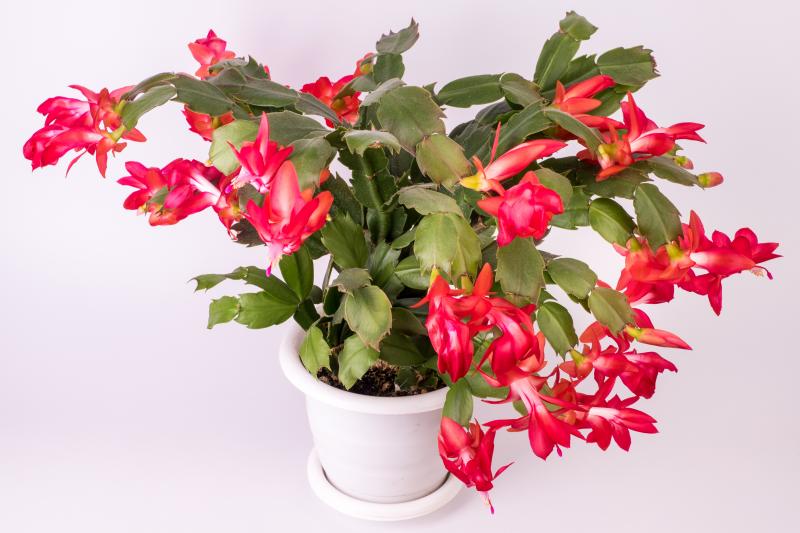Be careful about keeping Thanksgiving cactus in the dark before flowering
Finally, a blooming houseplant that we can be thankful for: Thanksgiving cacti (Schlumbergera truncata). These easy-to-care-for plants come in a wide range of colors; pinkish-red, purple, white, bright red and even yellow. They are sometimes called crab cactus, Thanksgiving cactus or holiday cactus. They grow well in cool, shady areas, so are perfectly fine inside your house and need very little maintenance.
The main difference between Christmas cactus and Thanksgiving cactus is the color of the pollen; Thanksgiving cactus pollen stems are yellow, and Christmas cacti have white pollen.
The stems are different too, Thanksgiving cactus have more pointed teeth on their stems where Christmas cactus stems are more rounded.
They will enjoy full sunlight during the winter, but hot, direct sun during the summer will make them pale, and even a bit yellow. Best growth occurs when temperatures are between 70 and 80 degrees F from April to September. Never let temperatures get much over 90 degrees once the flower buds are set in the fall, or the flowers may drop off without blooming.
The secret to getting lots of blooms on your Thanksgiving cactus is low temperature and darkness.
To get the most flowers, give your plant lots of bright, indirect light, with night temperatures between 55 and 65 degrees F.
Now the secret: make sure your Thanksgiving cactus gets 13 hours or more of continuous darkness every night. You can put the Thanksgiving cactus in a closet for the night or cover it with a loose-fitting black plastic bag. Start this darkness treatment around the middle of September and keep it up for at least eight weeks. You will see buds in three to four weeks.
Be careful about keeping Thanksgiving cactus in the dark before flowering; even as little as two hours of interrupted lighting will suppress flower bud set.
Water your cactus when the soil is dry to the touch. They are tolerant of dry soil, and do well when a bit under-watered.
Never let the soil become waterlogged, especially during the winter. Cut back on watering from fall through spring.
You can fertilize Thanksgiving cactus every month from late winter up until late summer when the plant is actively growing. Use a water-soluble fertilizer at just half strength.
Because Thanksgiving cactus blooms best when a bit potbound, you only have to repot it every few years. Use potting soil mix made especially for cactus or add sand to regular potting soil. The important thing is that the soil drains well and is not too rich in nitrogen.
Give thanks by sharing what you have, and Thanksgiving cacti are easy to propagate by cuttings, best taken in May or June. Break off pieces of stems with three to five phylloclades (stem segments) on each piece. Let the cut ends of the sections callus by putting them outdoors in the shade for a day or two.
Put the dried cuttings one inch deep into the cactus potting soil.
Water thoroughly and cover the plant with a clear plastic bag loosely secured with a rubber band around the pot. This plastic bag acts like a miniature greenhouse to maintain the relative humidity at 100 percent to encourage rooting. Place the pot where it will get bright, indirect light, and roots will form in three to eight weeks. After a few weeks you can remove the plastic bag greenhouse.
Whether as a hostess gift or a self-indulgence, colorful Thanksgiving cactus are an easy plant that blooms for weeks, and that is something to be thankful for.
























































